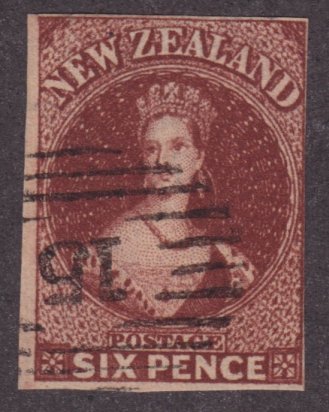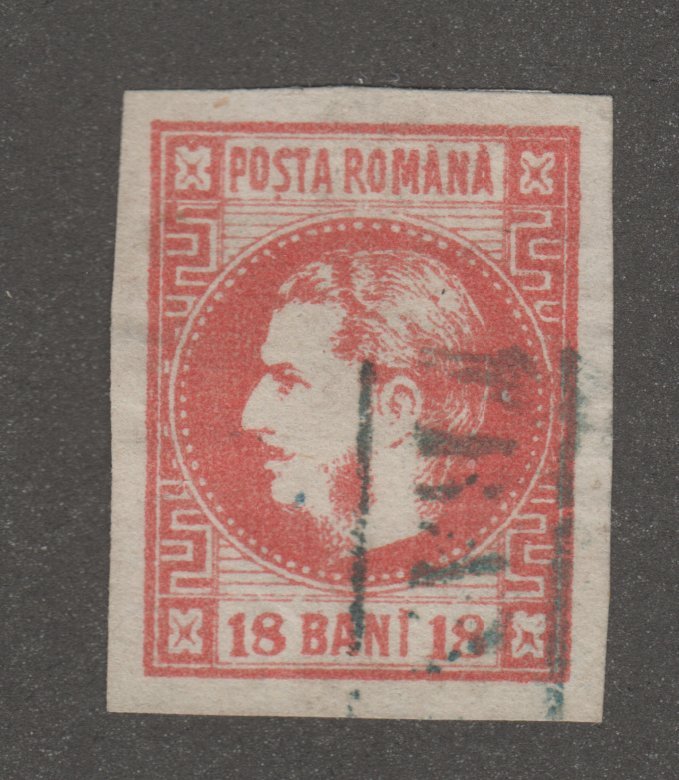
Discussion - Member to Member Sales - Research Center

Discussion - Member to Member Sales - Research Center

Thanks,
biggeorge


Login to Like
this post
It is a 1911 Paraguay bisect. In the Scott catalog, it should be Paraguay #200a.
Interestingly, using it as a "half-stamp" apparently reduced its postage value from 75c to 20c.
k

1 Member
likes this post.
Login to Like.
K,
Thank you for the quick response! I just found it also! It is a bisected 75 centavo, which should be the equivalent of 37.5 centavos, but it was authorized for use at a value of 20 centavos! I think that means that it was sold as a 20 centavo stamp.
George

Login to Like
this post
That's fascinating! I was always under the impression that bisects were used at half of the value of the original. I never knew the value could be further reduced by bisecting. Thanks so much for sharing that - love to learn something new.

Login to Like
this post
Yeah, one would think that, but evidently Paraguay figured out a way to make a little extra money. Don't let USPS hear about this. We'll be buying $2.00 face value stamps, and bisecting them in half will be the current first class rate!

Login to Like
this post
Hopefully, the Paraguayan Post Office took a stock of 75 centavo stamps and bisected them. Then sold the bisects for 20 centavos. The post office would lose no money. Prior to sale the little pieces of paper were only worth what it cost to have them printed. If the Postal authorities say that a bisected 75c stamp is worth 20c, then that is what they are worth. It also prevents those who may have had a stock of 75c stamps from cutting them in half. That would have turned 75c into 40c!
George

Login to Like
this post
As a student of Guatemala covers since 1998 i was always taught to believe that the bi sect was due to a shortage of postage. Guatemala postmasters would use anything at hand..officials,revenues, etc; to make up the correct postage rate.

Login to Like
this post
Phil, the bisects were officially created and authorized. Were these made at a central government printing facility or were they perfed locally by the local postmasters?

Login to Like
this post
the title of this is "The 1c Bisect provisonal of 1941"..the Tipografia Nacional perforated diagonally 2,000,000 copies of the 2c regular of 1929 (Scott 235) the guage of the perforation was 11.8 and it ran from the upper right corner to the lower left corner. So this created 4,000,000 of what Scott calls #300 1c deep blue. The International Society of Guatemala Collectors has their own catalog numbering system.so i used the scott numbers for this purpose .

1 Member
likes this post.
Login to Like.
Thanks, Phil, for the information.

Login to Like
this post

I am helping a member of our local club prepare pages for his collection of bisect stamps. One of the items he has been unable to identify is this one. My memory says that I have seen the issue before but perhaps I have watermarked too many stamps lately! Any ideas?
Thanks,
biggeorge


Login to Like
this post

re: Latin America? Or elsewhere? Bisect on Piece!
It is a 1911 Paraguay bisect. In the Scott catalog, it should be Paraguay #200a.
Interestingly, using it as a "half-stamp" apparently reduced its postage value from 75c to 20c.
k

1 Member
likes this post.
Login to Like.

re: Latin America? Or elsewhere? Bisect on Piece!
K,
Thank you for the quick response! I just found it also! It is a bisected 75 centavo, which should be the equivalent of 37.5 centavos, but it was authorized for use at a value of 20 centavos! I think that means that it was sold as a 20 centavo stamp.
George

Login to Like
this post

re: Latin America? Or elsewhere? Bisect on Piece!
That's fascinating! I was always under the impression that bisects were used at half of the value of the original. I never knew the value could be further reduced by bisecting. Thanks so much for sharing that - love to learn something new.

Login to Like
this post

re: Latin America? Or elsewhere? Bisect on Piece!
Yeah, one would think that, but evidently Paraguay figured out a way to make a little extra money. Don't let USPS hear about this. We'll be buying $2.00 face value stamps, and bisecting them in half will be the current first class rate!

Login to Like
this post

re: Latin America? Or elsewhere? Bisect on Piece!
Hopefully, the Paraguayan Post Office took a stock of 75 centavo stamps and bisected them. Then sold the bisects for 20 centavos. The post office would lose no money. Prior to sale the little pieces of paper were only worth what it cost to have them printed. If the Postal authorities say that a bisected 75c stamp is worth 20c, then that is what they are worth. It also prevents those who may have had a stock of 75c stamps from cutting them in half. That would have turned 75c into 40c!
George

Login to Like
this post

Auctions
re: Latin America? Or elsewhere? Bisect on Piece!
As a student of Guatemala covers since 1998 i was always taught to believe that the bi sect was due to a shortage of postage. Guatemala postmasters would use anything at hand..officials,revenues, etc; to make up the correct postage rate.

Login to Like
this post

re: Latin America? Or elsewhere? Bisect on Piece!
Phil, the bisects were officially created and authorized. Were these made at a central government printing facility or were they perfed locally by the local postmasters?

Login to Like
this post

Auctions
re: Latin America? Or elsewhere? Bisect on Piece!
the title of this is "The 1c Bisect provisonal of 1941"..the Tipografia Nacional perforated diagonally 2,000,000 copies of the 2c regular of 1929 (Scott 235) the guage of the perforation was 11.8 and it ran from the upper right corner to the lower left corner. So this created 4,000,000 of what Scott calls #300 1c deep blue. The International Society of Guatemala Collectors has their own catalog numbering system.so i used the scott numbers for this purpose .

1 Member
likes this post.
Login to Like.

re: Latin America? Or elsewhere? Bisect on Piece!
Thanks, Phil, for the information.

Login to Like
this post


